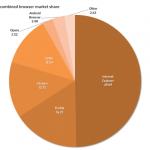
 New Federal Communications Commission restrictions on telemarketing calls and text messages go into effect Wednesday, October 16. Adopted by the commission last year, the amendment to the Telephone Consumer Protection Act (TCPA) “will require businesses to obtain ‘prior express written consent’ before placing telemarketing calls to mobile phones using an automatic telephone dialing system (ATDS) or an artificial or prerecorded voice, ” a Bloomberg Law summary explains. “The same regulations will now also require businesses to obtain ‘prior express written consent’ before placing telemarketing calls to residential lines using an artificial or prerecorded voice. As a result, effective Oct. 16, oral consent is not enough.” This new restriction applies to text messages as well. The FCC’s order notes that “text messaging is a form of communication used primarily between telephones and is therefore consistent with the definition of a ‘call.'” Thus, the commission said it “concluded that text messages would be subject to the TCPA.” Read 6 remaining paragraphs | Comments
New Federal Communications Commission restrictions on telemarketing calls and text messages go into effect Wednesday, October 16. Adopted by the commission last year, the amendment to the Telephone Consumer Protection Act (TCPA) “will require businesses to obtain ‘prior express written consent’ before placing telemarketing calls to mobile phones using an automatic telephone dialing system (ATDS) or an artificial or prerecorded voice, ” a Bloomberg Law summary explains. “The same regulations will now also require businesses to obtain ‘prior express written consent’ before placing telemarketing calls to residential lines using an artificial or prerecorded voice. As a result, effective Oct. 16, oral consent is not enough.” This new restriction applies to text messages as well. The FCC’s order notes that “text messaging is a form of communication used primarily between telephones and is therefore consistent with the definition of a ‘call.'” Thus, the commission said it “concluded that text messages would be subject to the TCPA.” Read 6 remaining paragraphs | Comments
Read this article:
Ban on most robocalls and text message spam gets stronger this month








